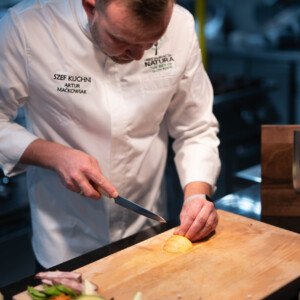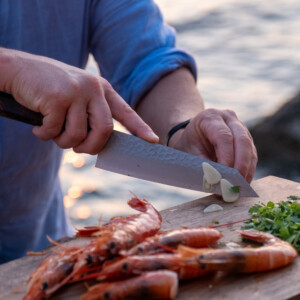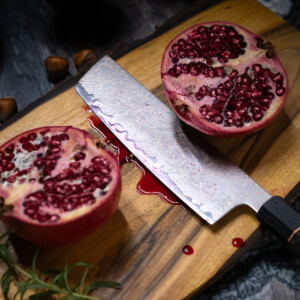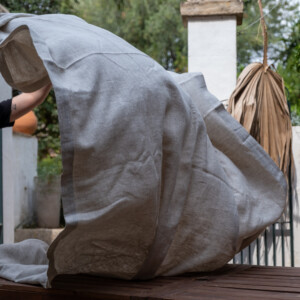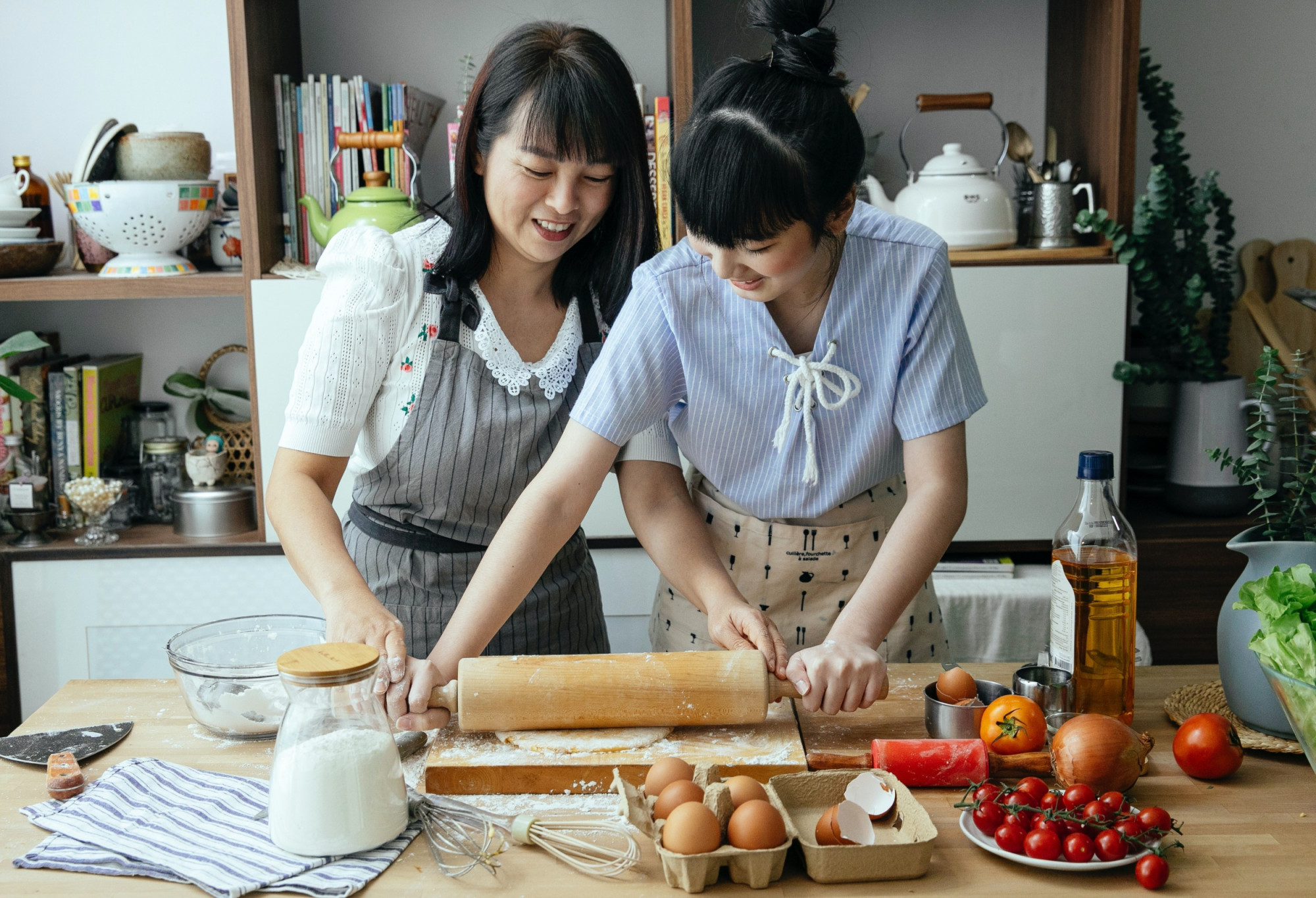Whether you’re a professional kitchen chef or an amateur cook, Japanese knife you should pay particular attention to the type of steel used in the blade when choosing your kitchen knives. Steel is really the essence of the blade and primarily responsible for how the knife performs. Steel is essentially an alloy (i.e. a mix) of carbon and iron that is often enriched with other elements such as nickel to improve certain characteristics depending on the desired application.
In the knife industry, you can find different types of steel are created by varying the types of additive elements as well as how the blade is rolled and heated (i.e. the finishing process). Refer to our Knife Steel Composition Chart for more details on these elements.
To understand the process of making traditional Japanese knives, read this article.
Ultimately, the different types of steel used in knife blades each exhibit varying degrees of these five key properties:
Hardness
Hardness is the ability to resist deforming when subject to stress and applied forces. Hardness in knife steels is often referred to as strength and is generally measured using the Rockwell C scale (aka “HRC”).
Toughness
Toughness is the resistance of the knife to cracking. Cracks always start at a weak point in the steel, such as an inclusion or a large primary carbide. So toughness is enhanced by a homogeneous structure that is free from impurities and large carbides. A fine-carbide steel grade will always have higher toughness than a coarse-carbide grade with a given hardness. Toughness is vital for professional and military knives.
Wear Resistance
Wear resistance is the steel’s ability to withstand damage from both abrasive and adhesive wear. Abrasive wear comes from softer surfaces coming in contact with rougher ones. Adhesive wear occurs when debris is dislodged from one surface and attaches to the other. Wear resistance generally correlates with the steel’s hardness but is also heavily influenced by the specific chemistry of the steel. In steels of equal hardness, the steel with larger carbides (think microscopic, hard, wear resistant particles) will typically resist wear better.
Edge Retention
Edge Retention represents how long the blade will retain its sharpness when subject to periods of use. (Hence: remember about using right sharpening tools!) It’s what everyone talks about these days but unfortunately, the measurement of edge retention lacks any defined set of standards and so much of the data is subjective. For Oishya standards, edge retention is a combination of wear resistance and an edge that resists deformation.
Unfortunately the “best knife steel” is not simply a case of maximising each of the properties above….rather it’s a trade-off. The biggest trade-off is balancing strength or hardness with toughness. Some blades can be made to be exceptionally hard but will chip or crack if you drop them onto a hard surface. Conversely, a blade can be extremely tough and able to bend but will struggle to hold its edge. Also, note that the term ‘stainless steel‘ is generally misleading as all types of steel will show some kind of discolouration if left exposed to the elements for long enough. By knowing how you plan to use the knife you will generally be able to determine the best steel for your situation.
 | Cross section edge rolling |  Edge chipping 1 (200x) Edge chipping 1 (200x) |
 Edge chipping 2 (200x) Edge chipping 2 (200x) |  |  |
Corrosion Resistance
Corrosion resistance should be selected to suit the application. Since high corrosion resistance involves sacrifices in edge performance, the best approach is to have resistance that is ‘good enough’ for the selected type of knife. An everyday carry knife and a fishing knife will make very different demands on corrosion resistance.
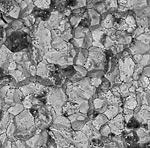 Pitting corrosion 1 Pitting corrosion 1 |  Pitting corrosion 2 Pitting corrosion 2 |
| Pitting corrosion edge 1 |  Pitting corrosion edge 2 Pitting corrosion edge 2 |
 Pitting corrosion edge 3 Pitting corrosion edge 3 | Pitting corrosio n edge 4 (1500x) n edge 4 (1500x) |
Common Knife Steel Types
The most common steel types generally fall into the following categories:
- Tool Steel – primarily hard steel alloys used in cutting tools.
- Carbon Steel – generally made for rough use where toughness and durability are important. Common in survival knives and machetes. They take a sharp edge and are relatively easy to re-sharpen. The trade-off is being more prone to corrosion given the low chromium content. The most popular carbon knife steel is 1095.
- Stainless Steel – basically carbon steel with added chromium to resist corrosion and other elements which increase performance levels but usually at the expense of inferior toughness. Easily the most popular category today and includes the 400, 154CM, AUS, VG, series of steels. (Such as our: Shikisai Miyako 33 Layer Damascus Aus-8a Gyuto 240mm knife)
Note that to qualify as true stainless steel there must be at least 13% chromium.
Common Japanese Knife Material Forging Types
There are two classes of traditional Japanese knife forging methods: honyaki (mono steel) and kasumi. The class is based on the method and material(s) used in forging the knife.
- Honyaki are ‘forged from one material. This is generally a top-grade knife-specific steel.
- Kasumi are made from two (or more layers of) materials: “hagane” (hard brittle cutting steel) and soft iron “jigane” (protective steel) welded together. This style of knife offers a similar cutting edge to a honyaki blade. It also offers the benefit of being “more forgiving” and generally easier to maintain than the honyaki style, at the expense of the steels brittle nature. Some see this as an advantage.
- San Mai (three layers) generally refers to knives with the hard steel “hagane” (over 50 different carbon and stainless steels are used by Japanese knife makers) in forming the blade’s cutting edge and jigane (soft playable steels) forming protective jacket on both sides of whatever brittle “hagane” steel. In stainless versions, this offers a practical and visible styling known as “Suminagashi” (not to be confused with Damascus Steel) providing the advantage of a superb cutting edge, with a corrosion resistant exterior. In professional Japanese kitchens, the edge is kept free of corrosion (when carbon steel is used for the Hagane) and knives are generally sharpened on a daily basis (which can limit the life of a knife to less than three years). Corrosion can be avoided by keeping the exposed portion of the non-stainless portion of the blade clean and dry after each use. This is not needed when the “hagane” and the “jigane” are both made of stainless steel.
Honyaki, Kasumi in more detail
The mentioned knives are both forged out of steel. These knives can be more brittle but are said to have better kirenaga (duration of sharpness) because of their hardness. However, they are more difficult (fragile) to use and maintain. Additionally, there are high-grade quality (Ho-) kasumi knives called hongasumi. This is known as such because of the materials used for the Hagane and the Jigane and the patterns “Suminagashi” they create as a result of the layers welded one on top of the other. Layered-steel kasumi called Suminagashi an (ornamental patterning process, not to be confused with Damascus Steel but often referred to by Japanese knife makers as Damascus Steel) that have longer kirenaga.
Originally, all Japanese kitchen knives were made from the same carbon steel as the traditional Japanese swords named Nihonto. However, the forging method is different. Nihonto are forged out of one type of steel that is laminated and then differentially heat treated. Currently san mai (hagane and jigane) knives have a similar quality, containing an inner core of hard and brittle carbon steel, with a thick layer of soft and more ductile steel layered to the core (hagane) so that the hard steel is exposed only at the cutting edge. Nowadays stainless steel is often used for Japanese kitchen knives, and san mai displaying the Suminagashi laminated blade construction which depending on which materials used makes the blades more expensive while addressing either corrosion, edge resistance while maintaining strength and durability.
What about Damascus steel?
Damascus steel originates from (surprise, surprise!) the Middle East from countries like India and Pakistan where it was first used back in good old “BC” times. It’s instantly recognisable as it bears a swirling pattern caused by the welding of two different steels. Often it is referred to as “pattern-welded” steel (not to be confused with Wootz steel which is only similar in appearance). There are many myths about the strength and capabilities of Damascus steel. However, today it is largely popular because of its aesthetic beauty without compromising much on the steel performance.
Other Considerations
Remember, blade steel is not everything. As a knife buyer, you should beware getting caught up in researching the perfect steel type as it is not by itself the only thing that dictates how a knife will perform. Steel analysis has become somewhat scientific that it’s easy to get caught up in the maze of statistics. Note – just because a blade is made from the premium or high-end steels listed above does not automatically mean it’s “better” than the lesser steels. The heat treatment techniques used by the blade maker as well as the design of the blade itself play a huge role in the ultimate outcome of knife performance! That’s what Japanese craftsmen excel in.
Cover photo: Cultivated Days



